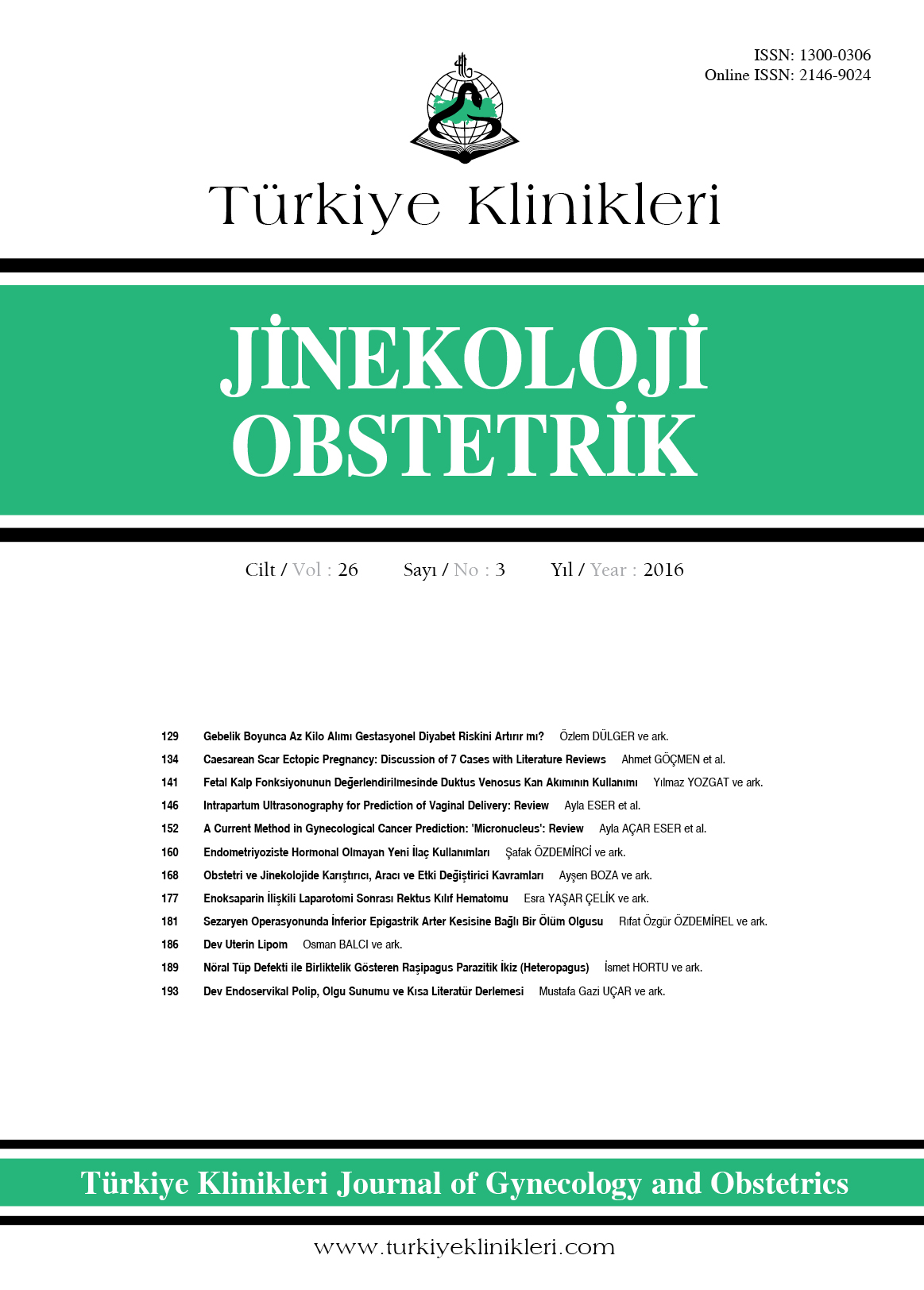Open Access
Peer Reviewed
CASE REPORTS
3416 Viewed1522 Downloaded
Neural Tube Defect with Parasitic Rachipagus Twin (Heteropagus): Case Report
Nöral Tüp Defekti ile Birliktelik Gösteren Raşipagus Parazitik İkiz (Heteropagus)
Turkiye Klinikleri J Gynecol Obst. 2016;26(3):189-92
DOI: 10.5336/gynobstet.2015-44429
Article Language: TR
Article Language: TR
Copyright Ⓒ 2025 by Türkiye Klinikleri. This is an open access article under the CC BY-NC-ND license (http://creativecommons.org/licenses/by-nc-nd/4.0/)
ÖZET
Yapışık ikizler 1/50.000-1/100.000 oranında görülebilen konjenital kas-iskelet sistemi anomalisidir. Fertilizasyondan yaklaşık 12-13 gün sonra monozigotik embriyonik diskin geç ve inkomplet bölünmesi ile oluşmaktadır. İkiz eşlerinin yapışma noktalarının anatomik yerleşimine göre isimlendirilmektedir. Ayrıca, başka malformasyonlara da eşlik edebilmektedir. Parazitik ikiz (heteropagus) ise yapışık ikizlerin çok nadir bir formudur. Bu çalışmada, gebeliğin 19. haftasında nöral tüp defektinin de eşlik ettiği raşipagus parazitik ikiz (heteropagus) ve yönetimi sunulmuştur.
Yapışık ikizler 1/50.000-1/100.000 oranında görülebilen konjenital kas-iskelet sistemi anomalisidir. Fertilizasyondan yaklaşık 12-13 gün sonra monozigotik embriyonik diskin geç ve inkomplet bölünmesi ile oluşmaktadır. İkiz eşlerinin yapışma noktalarının anatomik yerleşimine göre isimlendirilmektedir. Ayrıca, başka malformasyonlara da eşlik edebilmektedir. Parazitik ikiz (heteropagus) ise yapışık ikizlerin çok nadir bir formudur. Bu çalışmada, gebeliğin 19. haftasında nöral tüp defektinin de eşlik ettiği raşipagus parazitik ikiz (heteropagus) ve yönetimi sunulmuştur.
ANAHTAR KELİMELER: Nöral tüp defektleri; ikizler, bitişik
ABSTRACT
Conjoined twins are a congenital musculo-skeletal anomaly that can be seen 1/50.000-1/100.000. It occurs 12-13 days after fertilization via incomplete and late division of monozygotic embryonic disc. They can be named with depending on the anatomical location of the sticking points of twin pairs. Furthermore it may accompany other malformations. Parasitic twinning (heteropagus twinning) is a much rarer form of conjoined twinning. In this case report, a patient who was diagnosed with neural tube defect and rachipagus twinning at 19 weeks presented.
Conjoined twins are a congenital musculo-skeletal anomaly that can be seen 1/50.000-1/100.000. It occurs 12-13 days after fertilization via incomplete and late division of monozygotic embryonic disc. They can be named with depending on the anatomical location of the sticking points of twin pairs. Furthermore it may accompany other malformations. Parasitic twinning (heteropagus twinning) is a much rarer form of conjoined twinning. In this case report, a patient who was diagnosed with neural tube defect and rachipagus twinning at 19 weeks presented.
MENU
POPULAR ARTICLES
MOST DOWNLOADED ARTICLES





This journal is licensed under a Creative Commons Attribution-NonCommercial-NoDerivatives 4.0 International License.










